Cancelled! Ten great fighter aircraft that never entered service

The Grumman F11F-1F Super Tiger out performed the Saab Draken, Lockheed F-104 Starfighter, Dassault Mirage III and Fiat G.91 in a tender to equip the Swiss Air Force. The Mirage III was finally chosen as a safer alternative. As Dassault can testify from more recent experiences, winning a Swiss fighter evaluation is no guarantee of anything. The Super Tiger never entered production.
Many of the finest fighter aircraft ever made were consigned to the scrapheap of history. Sometimes they were defeated in evaluations by superior opponents. Sometimes bribery, intrigue or plain bad luck killed these unlucky warriors. Here is a mouth-watering selection of ten fighters which didn’t make it to squadron service.
Dear aviation lunatic, save the Hush-Kit blog. Our site is absolutely free and we want to stay free, without adverts or restrictions- this is where you come in: send a donation here. The more we get, the more we can give you. Thanks for your time.
10. McDonnell Douglas/Northrop YF-23 Black Widow II (1990)
The 1980s Advanced Tactical Fighter programme sought to replace the F-15 with a fighter that combined the new technology of radar stealth with advanced avionics and engine technology. The fighter was needed to counter a generation of Russian fighters that threatened the US’ traditional technical superiority. The stakes to win this contest were extremely high, with the winner expecting a $65 billion contract. No expense was to be spared in producing a stealthy fighter to dominate the skies. All the major US aerospace companies submitted designs, but only two teams were downselected to produce prototype designs for a competitive fly-off. One was a Lockheed/Boeing/General Dynamic team and the other was Northrop/McDonnell Douglas. The YF-23’s pedigree was impeccable, Northrop had built the most advanced stealth aircraft in the world, the B-2, and McDonnell Douglas was the most experienced fighter house in the world having developed the supremely capable F-15 and the cutting-edge F/A-18. The YF-23 was a sleek masterpiece, quite unlike anything else flying before or since. It was probably both stealthier and faster than the F-22, which is astonishing considering that the F-22 can maintain a speed of Mach 1.82 without resorting to reheat (afterburners). Lacking the large conventional tail surfaces and thrust-vectoring (a risky technology) of the F-22 it was likely that the YF-23 was less agile, and it may also have been harder to maintain. The Black Widow was also larger than the F-22 which was likely to have translated into it being more costly to procure and operate. The YF-23 lost the evaluation, and today the F-22 Raptor is in service with USAF. What is certain is the YF-23 was the most formidable fighter never to have entered service. 
9. Avro Canada CF-105 Arrow (1958)
The phrase ‘Canadian superfighter’ sounds odd, but that’s what the CF-105 was. Fast, long-ranged and fitted with advanced avionics, it would have proved devastatingly proficient at destroying incoming Soviet bombers. It was extremely innovative, and was the first ‘fly-by-wire’ fighter, flying with electric signal control as far back as 1958! The world would not catch up with this technology until the teen fighters of the mid 1970s. The initial aircraft was Mach 2 capable but plans were afoot for a Mach 3 variant. The Arrow was to be fitted with weapon systems that exceeded the contemporary state of the art: it was intended to be armed with internally carried Sparrow II missiles, an ‘active’ beyond visual range weapon (essentially they wanted an AMRAAM thirty years early). The Arrow was to operate as part of a vast fully automated, integrated air defence system intended to protect Canada from its communist neighbour.
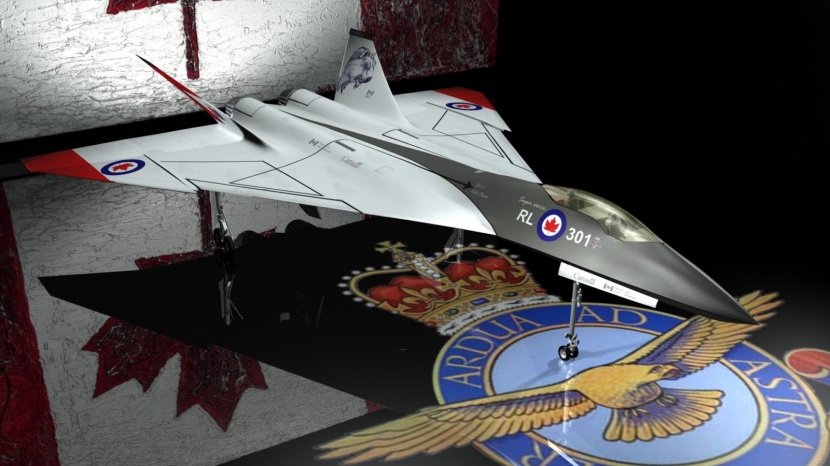
The ‘Super Arrow’ was proposed by Bourdeau Industries in 2012. The extremely optimistic projected $11.73 billion cost to develop and produce a new heavy stealth fighter raised more than a few eyebrows. In light of recent US-Canada relations perhaps it would have had some merit!
The whole project was axed in 1959. It is still mourned by Canadians today, and it is probably this proud nostalgia that led to the bizarre recent proposal for a production line to be opened in the near future to create modern stealthy CF-105s. Though conspiracy theories abound of US interference leading to its cancellation, it’s likely that it was actually the budget book that killed a hugely ambitious, and wildly expensive project.
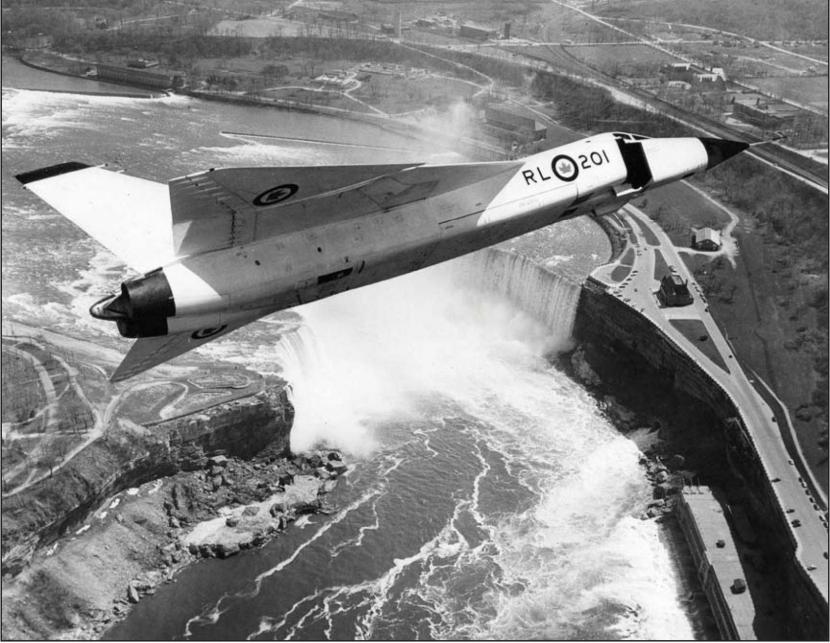
8. Martin-Baker MB5 (1944)
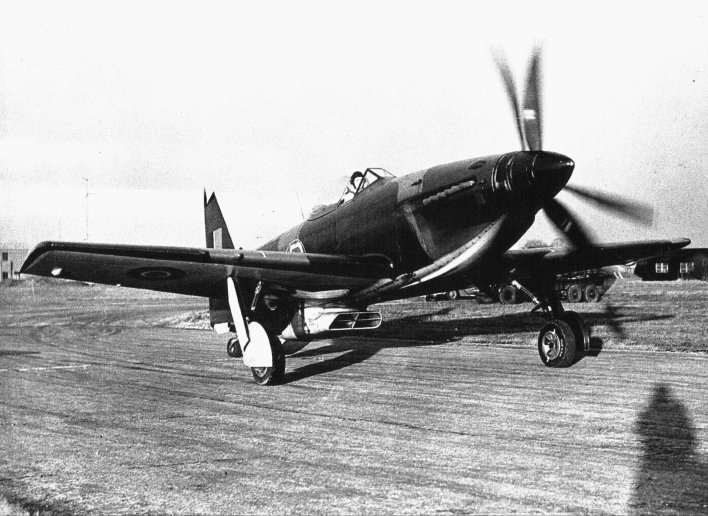
The MB5 The full potential of the Griffon 83 engine was harnessed by a six bladed contra-rotated propeller.
The best British piston-engined fighter ever flown. Well armed, very fast and easy to maintain. Flight trials proved it be truly exceptional, with a top speed of 460mph, brisk acceleration and docile handling. Its cockpit layout set a gold standard that Boscombe Down experts recommended should be followed by all piston-engined fighters. A multitude of access panels made it far easier to maintain than its contemporaries, and its tough structure (a more advanced version of the load-bearing tubular box type favoured by Hawker) would have given it greater survivability. The only thing the MB5 lacked was good timing, it first flew two weeks before the Allied Invasion of Normandy. Born at the birth of the jet age, with readily available Spitfires and Tempests this masterpiece of British engineering didn’t stand a chance.
Save the Hush-Kit blog. This site is in peril, we are far behind our funding targets. Our site is absolutely free and we have no advertisements. If you’ve enjoyed an article you can donate here.
7. Commonwealth CA-15 ‘Kangaroo’ (1946)
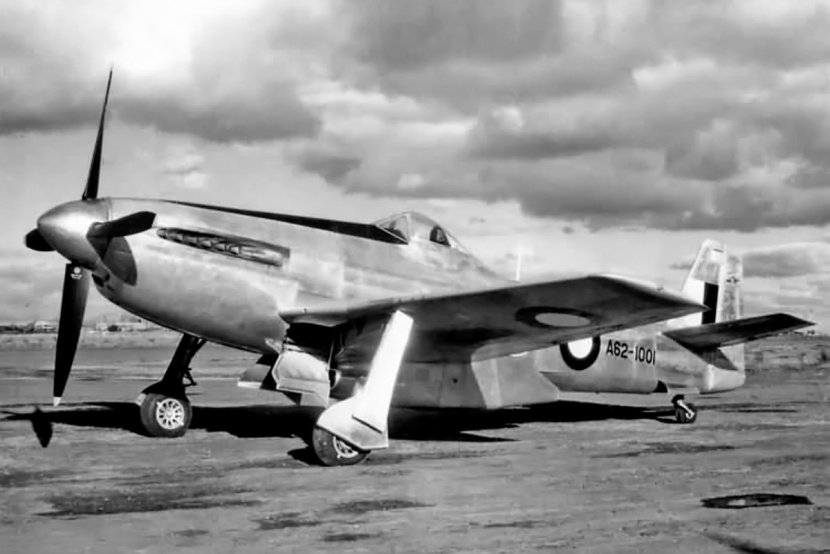
A strong contender for the title of the ultimate piston-engined fighter is the Australian Commonwealth CA-15 ‘Kangaroo’. The RAAF wanted a fighter superior to the highly respected P-51 Mustang, so accordingly issued an exceptionally demanding requirement. The specification called for a machine with a high rate of climb, excellent manoeuvrability including a high roll rate, and a generous range. The resultant Kangaroo delivered on all promises, and boasted a top speed of 458mph, and a range on internal fuel of 1,150 miles! The addition of drop tanks allowed for 2,540 mile flights. These remarkable figures were attained with the Griffon 61, even more impressive figures would have been achieved if the desired Double Wasp or three-speed Griffon had been fitted. Like the MB5 it was just too late to the party.
6. Dassault Mirage 4000 (1979)
France’s Mirage 2000 has been described by many fighter pilots as the perfect flying machine. Its ferociously high performance and almost telekinetic responsiveness have left pilots of many nationalities giddy with love and respect for the ‘Electric Cake Slice’. So imagine a ‘2000 with twice the power and you have a pretty spectacular aeroplane; the 4000, which first flew in 1979 was a just such an aircraft, in the same heavyweight class as the F-15 and Su-27. The Mirage 4000 was one of the first aircraft to incorporate carbon fibre composites (to keep weight down)- and was probably the very first to feature a fin made of this advanced material. Thanks to its light structure and powerful engines it had a thrust-to-weight ratio that exceeded 1: 1 in an air-to-air load-out. On its sixth test flight it reached 50,000 feet at Mach 2 in 3 minutes 50 seconds. The 4000 would have been agile, long-ranged and able to haul an impressive arsenal. Its capacious nose could have held an advanced long-range radar. The French air force didn’t want it, Iran — another potential customer- had a revolution, and Saudi Arabia, also on the look-out for a heavy fighter, opted instead for the F-15. Despite its obvious potential, the Mirage 4000 failed to find a customer, which was an enormous kick in the nuts for Dassault, as the company had privately funded the type’s development.
5. IAI Lavi (1986)
In the mid-1970s Israel began work on an indigenous fighter-bomber to replace its A-4s and Mirage derivatives. Development of the very advanced design was aided by US technological assistance. The highly agile canard delta first flew in 1986 and showed great potential. Similar to the F-16 but with greater manoeuvrability at higher speed (though it had a lower maximum speed of Mach 1.6) and altitudes it was also to be fitted with Israel’s widely respected guided munitions and electronic warfare equipment. But the Lavi project was too expensive for such a small country and it was cancelled in favour of a F-16C order. The degree to which the design influenced China’s J-10 is much disputed but it is generally agreed that Chengdu learned much from Israeli industrial visits. Had the Lavi gone into production it would likely have been a potent multirole aircraft, somewhat like a larger Gripen.
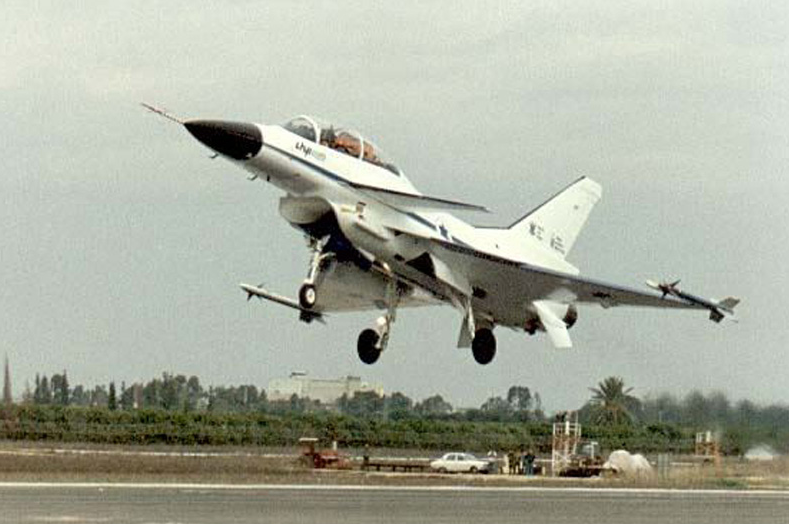
4. Northrop F-20 Tigershark
The F-20 was the ultimate US F-5 derivative. However unlike the twin-engined Tiger II and Freedom Fighter, the F-20 was powered by a single engine. It was intended to serve the needs of US client nations not cleared for fighters as advanced as the F-16. The F-20 had similar performance to the F-16 but would have been easier to maintain and cheaper to operate. Flight trials went extremely well and Chuck Yeager became an enthusiastic advocate of the type. When restrictions on F-16 exports relaxed, the F-20 lost its raison d’etre. An attempt to provide F-20s for the US aggressor fleet proved unsuccessful perhaps as General Dynamics and some in the F-16 community feared the F-20 reaching production status. In the end this privately funded fighter fell by the wayside, but did serve to distract attention away from Northrop’s secretive work on the nascent B-2 stealth bomber.
The F404 engine that had powered the F-20 did find gainful employment in the light fighter world, going on to power the Saab Gripen, KAI FA-50 and Tejas Mk 1.
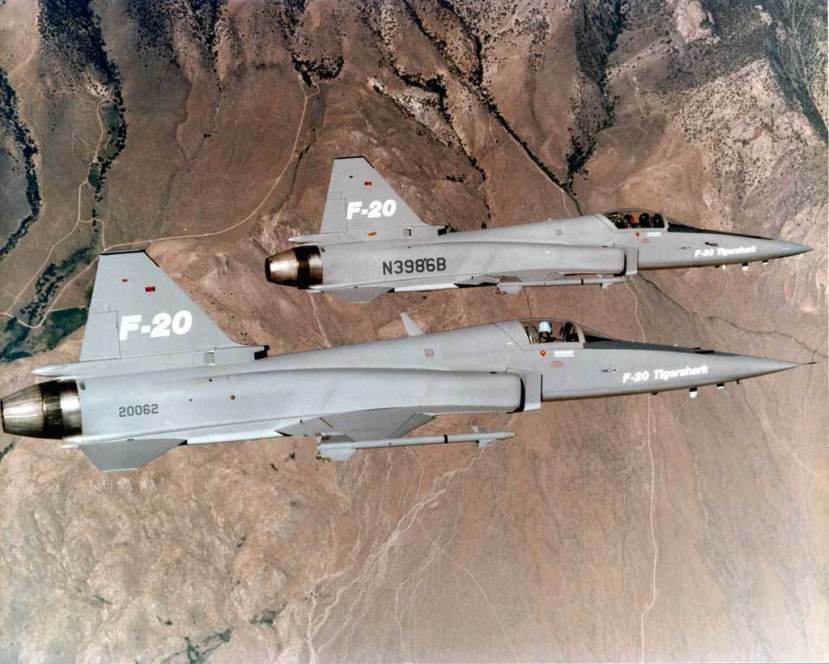
Until the late 1950s each generation of fighter interceptors was faster than the last. It stood to reason that the Mach 2.3 capable F-106 would be replaced by something even faster, and work on the the F-108 Rapier began accordingly. Somewhat unsurprisingly, a fleet of Mach 3 fighters that each weighed twice the weight of a loaded Lancaster bomber proved too expensive to develop. It seemed a shame to waste the expensive radar, missiles and fire control system developed for the F-108 so they were fitted to the only available airframe of comparable performance, the extremely secret Lockheed A-12 reconnaissance aircraft. The cost of the war in Vietnam and a less defensive military posture saw the funding for the 93 aircraft USAF wanted scrapped. Elements of this weapon system eventually found their way onto the F-14 Tomcat.
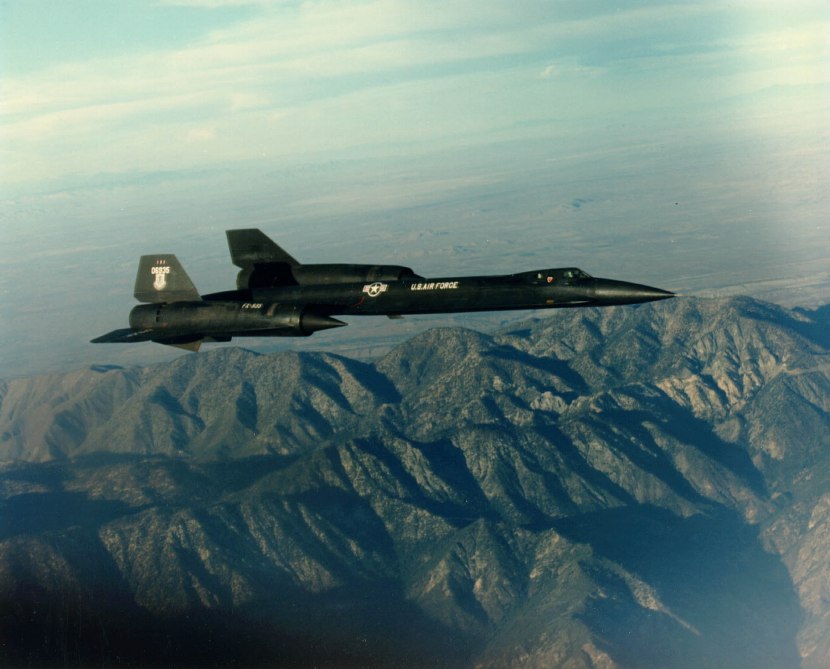
2. Focke-Wulf Fw 187 (1937)
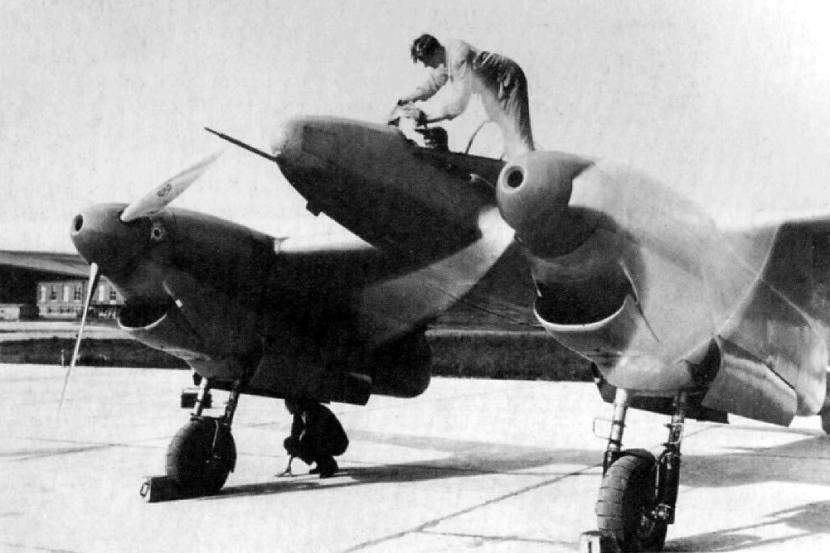
The American P-38 Lightning was a single-seat twin-engined fighter and it proved a great success, but the idea was novel for its time. By keeping the frontal cross section to the absolute minimum, this class of aircraft could be as fast as a single-engined fighter but with far greater range, and if required, firepower. The Germany company Focke-Wulf also tried this idea, and the result was the superb Fw 187. The Fw 187 was an extremely clean design aerodynamically, everything being done to keep the frontal cross section to the absolute minimum; the cockpit was tiny (even by German standards), the dashboard of which was so small that some of the instruments had to be mounted externally on the engine nacelles. The result of this strict adherence to aerodynamic slickness was an extremely fast manoeuvrable fighter with an impressive range. With the original Jumo 210Da engines, a compromise unwanted by the designer, the prototype clocked 326 mph, which was 50mph faster than the much hyped Messerschmitt 210. When the desired DB 600As were added in 1939, the Fw 187 hit a level flight speed of 394mph, an astonishing figure for the time. Armed with two cannon and four machine-guns, the type would have proved a huge thorn in the side for the RAF’s Fighter Command if employed as an escort fighter in the Battle of Britain. Despite a small operational evaluation, the type never entered series production. The Me 210 lobby had greater political clout than the exponents of the Fw 187, and Focke-Wulf was devoting its resources to the development of the Fw 190.
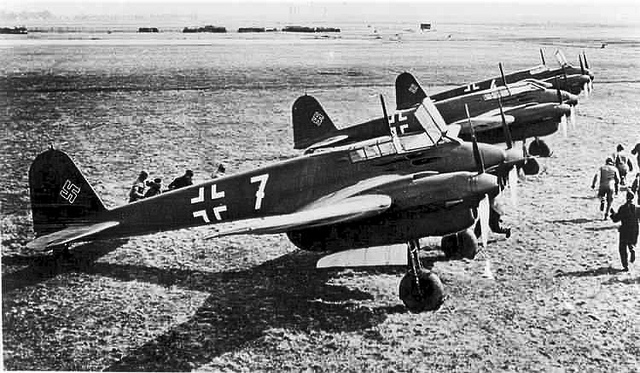
1. Vought XF8U-3 Crusader III (Reader’s choice, suggested by Rowland White)
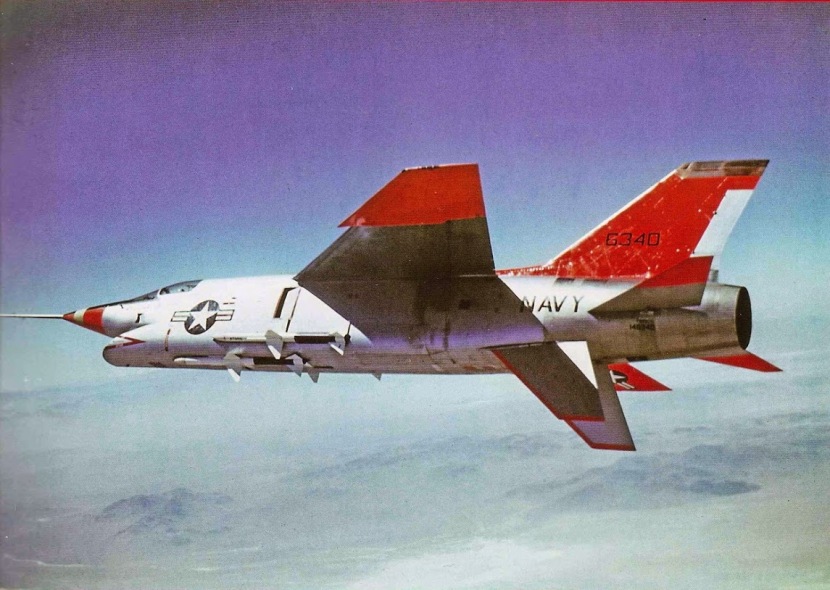
As ‘phabulous’ as the Phantom was, in the F-4, the US Navy may have picked the wrong aircraft. Had they gone for the Crusader III instead, the Vought machine would have made mincemeat of the MiGs over Vietnam.
YOU NEED THE HUSH-KIT BOOK OF WARPLANES ON YOUR SHELF! Read the reviews to find out why
The XF8U-3 first flew on 2 June 1958. The prototype reached Mach 2.39, and demonstrated a zoom ceiling well over 76,000 ft (23,170 m). Fly-offs against the F4H (the early Phantom), demonstrated that the Crusader III had vastly superior manoeuvrability. John Konrad, Vought’s chief test pilot, noted that it “fly circles around the Phantom II”. Its combat thrust-to-weight ratio (T/W ratio) was approached unity (0.97), an almost unprecedented figure for the 1950s (the F4H reached around 0.86). The F8U-3 program was cancelled after five aircraft built, but not all was wasted: NASA appreciated the type’s remarkable high altitude performance and took three of the test aircraft for research purposes. These NASA Crusaders routinely intercepted and defeated U.S. Navy Phantom IIs in unrequested mock ‘bounce’ dogfights. The Navy did not enjoy this bullying and ordered NASA to stop it.
Though the XF8U-3 was a better dogfighter, the Phantom had a crew of two, which was a huge advantage considering how hard it was to operate contemporary radars and missiles, and could carry a weapon-load twice as big. The F-4 also had the advantage of two engines, a prime consideration for an operator at sea. Still, there is little doubt that the Crusader III would have been a formidable air superiority fighter or interceptor. With the advent of 1970s technology, allowing effective single crew operations, it could have matured into an exceptionally potent fighter. 
Have a look at How to kill a Raptor, An Idiot’s Guide to Chinese Flankers, the 10 worst British military aircraft, The 10 worst French aircraft, Su-35 versus Typhoon, 10 Best fighters of World War II , top WVR and BVR fighters of today, an interview with a Super Hornet pilot and a Pacifist’s Guide to Warplanes. Was the Spitfire overrated? Want something more bizarre? The Top Ten fictional aircraft is a fascinating read, as is The Strange Story and The Planet Satellite. The Fashion Versus Aircraft Camo is also a real cracker. Those interested in the Cold Way should read A pilot’s guide to flying and fighting in the Lightning. Those feeling less belligerent may enjoy A pilot’s farewell to the Airbus A340. Looking for something more humorous? Have a look at this F-35 satire and ‘Werner Herzog’s Guide to pusher bi-planes or the Ten most boring aircraft. In the mood for something more offensive? Try the NSFW 10 best looking American airplanes, or the same but for Canadians.

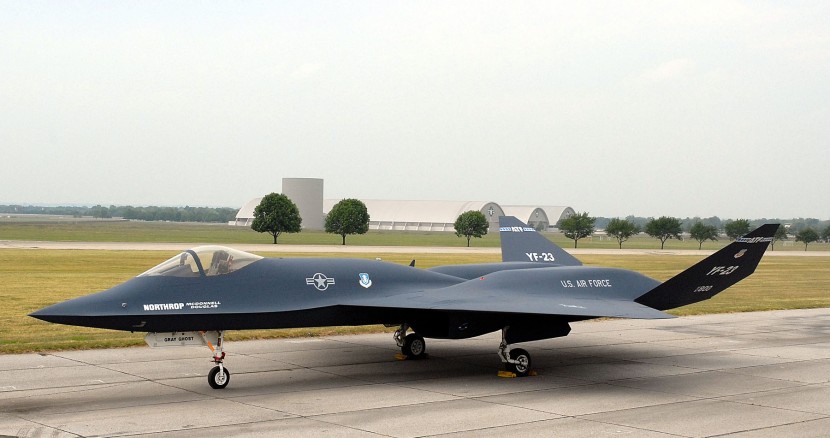
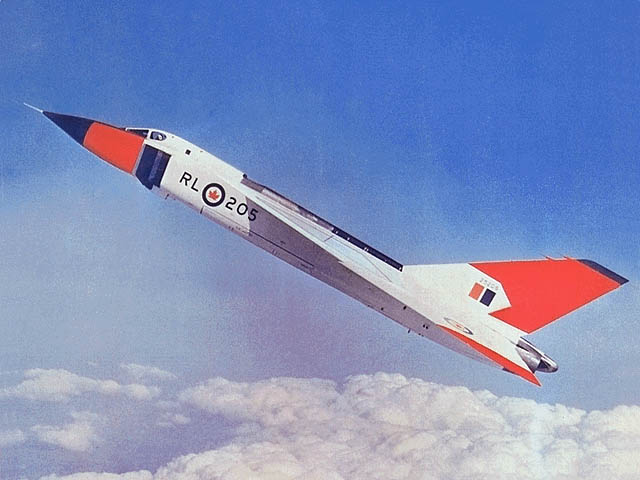

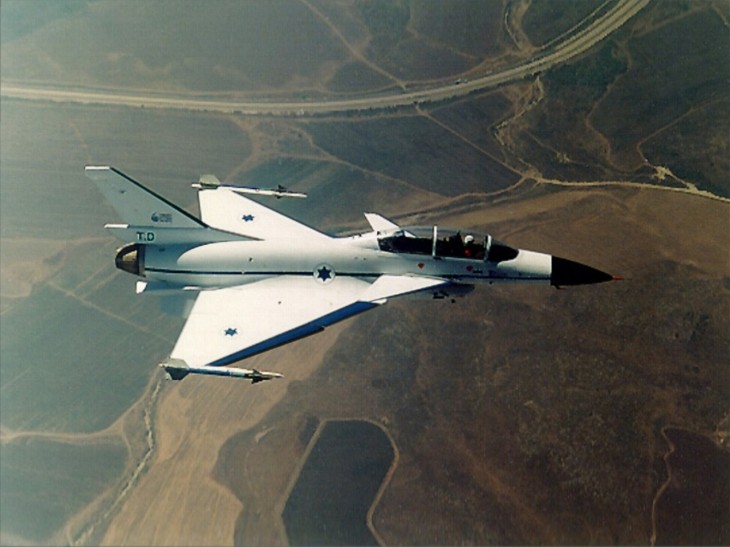


The F-35 should have been in that list 🙂
There are several prototypes which were not given ,so as to prevent sneak peak steal of any technology , which has to be brought forward in links with stealth ambitions of so many large vessels kept for dark room surveillance , and for reconnoissaince audits , nothing as such alter did happen except Iraq war , in 1970 and Korean war 1950 , and soviet interception in 1990 in Afghanistan , its now needed yf -23 should get the large enhancement , orders and yf-12 too , for long range interceptions .
“Can I make it look like a shark?”
“I’m sorry, I didn’t . . .”
“Like a shark.”
“Um, yeah, sure, son, if you can make the performance figures the Navy want, you can make it look like a . . . like a . . .”
“Shark. A shark.”
FX: [project manager walks slowly away from drawing office, making no sudden moves].
I’d say there’s a case for adding the F-16XL to this list. The huge cranked-arrow wing reportedly allowed supercruise (Mach 1.1 at 20,000′) and its ordnance load out would have been huge, but the USAF opted for the F-15E Strike Eagle instead. http://www.f-16.net/f-16_versions_article1.html
I’d probably switch out the YF-12 for its utter improbability, given the well-known issues faced by the Blackbird fleet. Which were very tolerable for the unique reconnaissance performance that plane offered, but would be a real drag on fighter squadrons.
Mirage 4000: of course the French Air Force would have been happy to field this aircraft. But the government didn’t want to fund it.
Dassault plan was to make Mirage 4000 for FAF and Mirage 2000 to replace Mirage III on export market. Since Dassault couldn’t secure domestic order, the company didn’t found any export customer.
I looked up Grumman F11F-1F Super Tiger on Wikipedia where they have a 3-view drawing. That makes it look like a giant Gnat. Is that a bad thing?